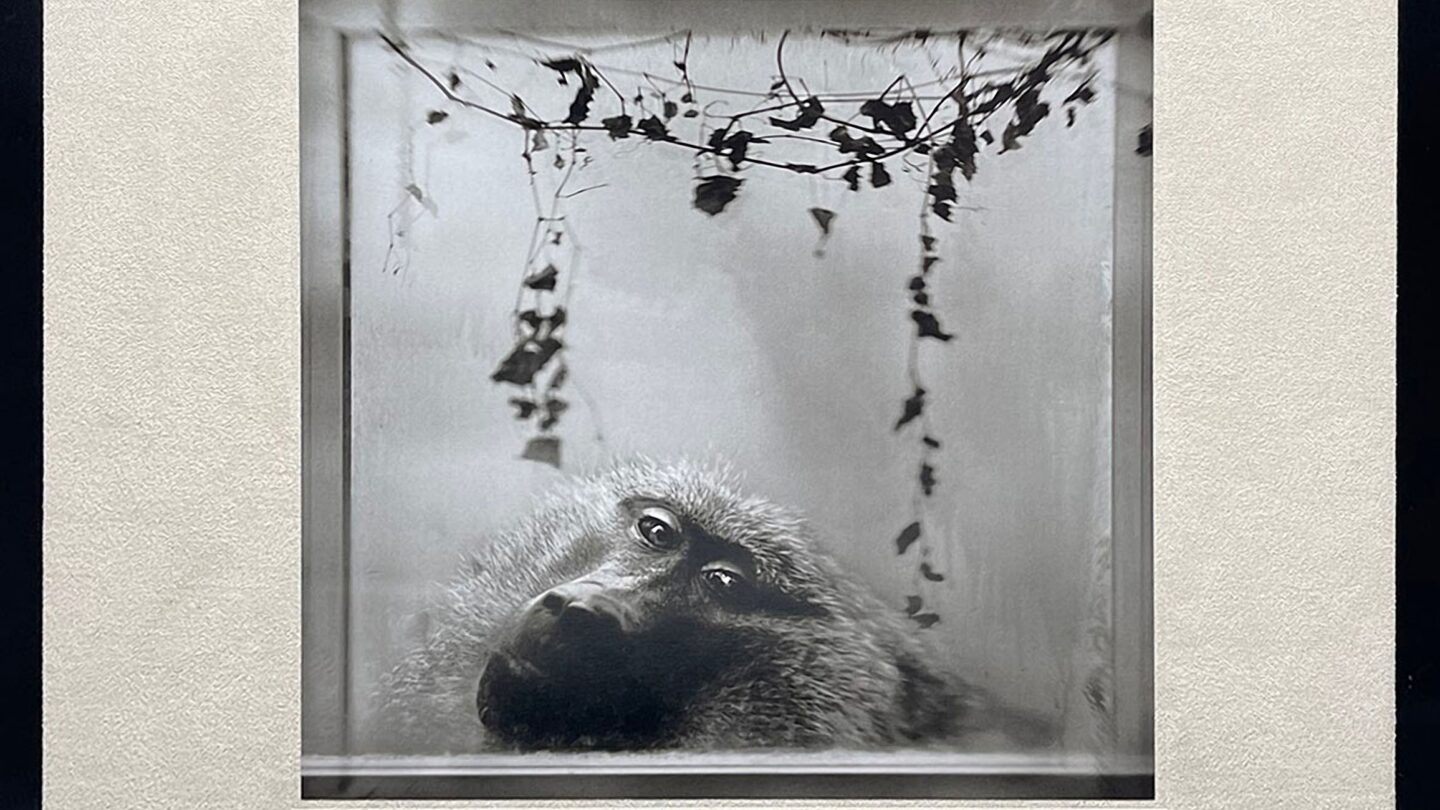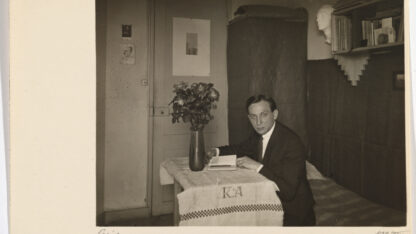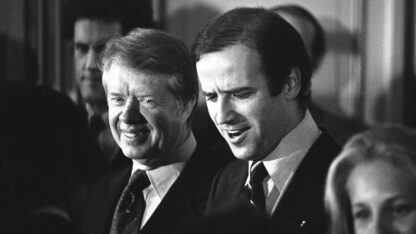Anne Berry's new photography book rallies protection and empathy for primates

Curator and critic Jerry Cullum writes that photographer Anne Berry’s art is deployed in the documenting of an already profound encounter. Those encounters depict primates conveying a surprising range of facial expressions and depth of emotion. The artwork appears in a new book “Behind Glass,” a collection of photos by Anne Berry. She and the book’s designer, Laurie Shock, joined “City Lights” host Lois Reitzes via Zoom to discuss Berry’s work revealing the uncanny charisma of her primate subjects.
Interview highlights:
So photogenic, you’d think they’re posing:
“In this very small zoo in Krefeld, Germany, I was taking pictures,” recounted Berry. “A lady was in there sketching, and she realized that I also was staying in the exhibit, and she came over, and she spoke a little English. And she said, ‘I want to introduce you to my favorite chimpanzee,’ and she walked me up to this big window, and the chimpanzee … came over to the window. She said, ‘This woman has come from the United States, and she wants to take your picture.’ He ran and got this large metal screw, and came back and sat down in front of me holding this screw … and then when I finished taking his picture, he went and hid it again.”
“Each type of primate has a different type of personality, I think, and you can really see in the apes that they all have their own personality and their own facial features. You can tell them apart,” said Berry. “I think the smaller monkeys, it’s harder to tell, and also you get a lot of people saying, ‘Oh, that monkey’s so sad,’ which is not actually true. They just don’t have the muscles; that a smile to a primate is not like a smile to us.”
How the experience of “Behind Glass” recreates Berry’s real-life encounters:
“We wanted to create a quiet and intimate experience for the reader, similar to her one-on-one meetings with the primates. We wanted a reader to be able to really experience that, each and every image without competition. So that’s why there’s one image on each spread so that you really have time to sit and get to know, as much as you can, the personalities of each primate,” said Shock.
“Different artists have different intents with what they want the reader to know as they’re looking at each image, and if you don’t have a lot of information with the image, then the reader can bring their own feelings and emotions to that image without any competition, without knowing anything about it,” Shock explained. “In this case, that kind of parallels Anne’s experience when she goes into these zoos, and she gets to know and creates a relationship with them.”
Berry’s primate portraits in the context of captivity and ethics:
“You don’t see the zoo. You can’t say; they’re in the window, you can’t see whether or not they have a gorgeous outdoor enclosure or not,” Berry said. “I wanted to focus on the beauty of the animal, and maybe that you look at it and feel a relationship with it and some empathy for it. And then maybe you would go and say, ‘Oh, well, that crested macaque that has his hand on the window, when I read about them, they’re just extremely endangered in their habitat.’ So for people that say that ‘I don’t like to look at this, ‘cause I don’t like zoos,’ I would like to say, ‘Well, I hope you are doing something about animals in the wild, because the wild is shrinking until there’s basically not any wild left.’”
Anne Berry’s photography book “Behind Glass” is available now at anneberry.bigcartel.com. The book recently won two IPPY (The Independent Publisher Awards) awards.








